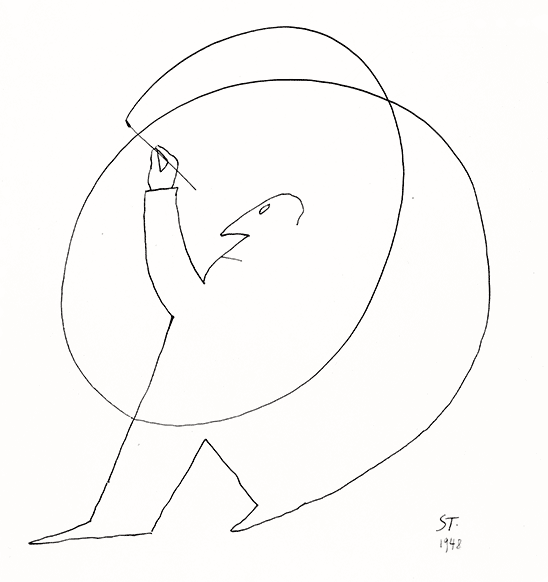Introduction
Famed worldwide for giving graphic definition to the postwar age, Saul Steinberg (1914-1999) had one of the most remarkable careers in American art. While renowned for the covers and drawings that appeared in The New Yorker for nearly six decades, he was equally acclaimed for the drawings, paintings, prints, collages, and sculptures he exhibited internationally in galleries and museums.
Steinberg crafted a rich and ever-evolving idiom that found full expression through these parallel yet integrated careers. Such many-leveled art, however, resists conventional critical categories. “I don’t quite belong to the art, cartoon or magazine world, so the art world doesn’t quite know where to place me,” he said. 1 He was a modernist without portfolio, constantly crossing boundaries into uncharted visual territory. In subject matter and styles, he made no distinction between high and low art, which he freely conflated in an oeuvre that is stylistically diverse yet consistent in depth and visual imagination.

